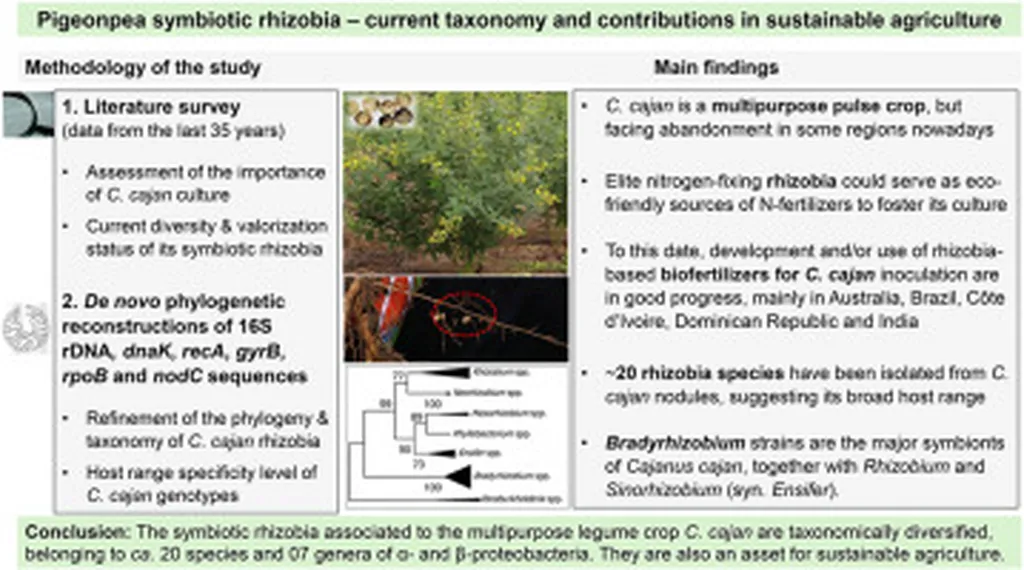In the heart of Côte d’Ivoire, a team of researchers led by Romain Kouakou Fossou from the National Polytechnic Institute Félix HOUPHOUËT-BOIGNY is unlocking the secrets of a humble yet mighty crop: the pigeonpea (Cajanus cajan). Their recent study, published in the Journal of Agriculture and Food Research (translated as ‘Journal of Agricultural and Food Research’), sheds light on the symbiotic bacteria associated with this versatile legume, offering promising avenues for sustainable agriculture and biofertilizer development.
Pigeonpea, often overshadowed by more popular legumes, is a nutritional powerhouse and a climate-resilient crop that supports over a billion people across more than 100 countries. “Despite its importance, pigeonpea is facing abandonment in some regions, including West Africa,” notes Fossou. “Our study aims to change that by highlighting its potential and the beneficial microbes associated with it.”
The research team delved into the genetic diversity, taxonomy, and symbiotic effectiveness of rhizobia—bacteria that form mutually beneficial relationships with leguminous plants—associated with pigeonpea. Over the past 35 years, diverse strains affiliated with approximately 20 rhizobial species have been isolated from pigeonpea nodules, all scattered within seven genera of α-proteobacteria and β-proteobacteria. Notably, Bradyhizobium strains emerged as the major isolates, suggesting a broad host range for this legume.
The study’s findings are not just academic; they have significant commercial implications, particularly for the biofertilizer industry. Symbiotic effectiveness tests in greenhouse and field conditions led to the selection of highly effective isolates, which are being further developed to meet industry standards and commercialized as biofertilizers in countries like Australia, Brazil, Côte d’Ivoire, the Dominican Republic, and India.
“This research highlights the potential of leveraging indigenous plant-beneficial microbes as a strategy to promote sustainable agriculture,” Fossou explains. The discovery of novel rhizobial taxa, including symbiovars and novel species, opens up new possibilities for enhancing crop productivity and resilience.
The implications for the energy sector are also noteworthy. As the world shifts towards sustainable and renewable energy sources, the role of biofertilizers in reducing the environmental impact of agriculture becomes increasingly important. By improving soil health and reducing the need for chemical fertilizers, these biofertilizers can contribute to a more sustainable and energy-efficient agricultural system.
The study’s findings are a testament to the power of scientific research in driving innovation and sustainability. As Fossou and his team continue to explore the potential of pigeonpea and its symbiotic bacteria, they are paving the way for a greener, more resilient future in agriculture. The research, published in the Journal of Agriculture and Food Research, serves as a call to action for policymakers, farmers, and industry leaders to recognize and invest in the potential of this often-overlooked crop and its beneficial microbes.

